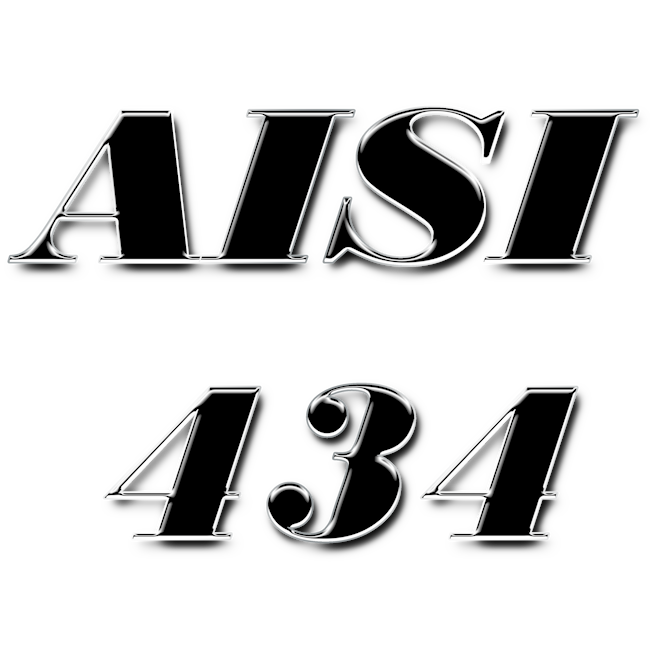AISI 434 | EN 1.4113 | DIN X6CrMo17-1 is a ferritic stainless steel, one of the most widely used ferritic stainless steels. The addition of molybdenum improves the overall corrosion resistance of this alloy and makes it resistant to chemicals. The steel combines good resistance to temperature and oxidation. It has good mechanical properties.
Physical properties
Density g/cm³ = 7.7.
| Temperature | +20°С | +100°С | +200°C | +300°С | +400°С | +500°С |
| Modulus of elasticity, GPa | 220 | 215 | 210 | 205 | 195 | - |
| Coefficient of linear expansion, 10-6/°C | 10,0 | 10,0 | 10,5 | 10,5 | 10,5 | 11,0 |
| Thermal conductivity at +20°C, W/m*K | Specific heat capacity at +20°C, J/kg*K | Specific electrical resistance at +20°C, μOhm*m | Magnetic properties |
| 25 | 460 | 0,7 | magnetic |
Technological properties
⓵ Welding
This grade is poorly suited for welding. It readily forms martensite in the weld, resulting in brittle and relatively non-deformable joints. Satisfactory results can be obtained without the use of post-weld procedures, provided that the welding process used is suited to the welding and that the welding power is not too high. Metal parts can be welded using spot or seam methods. Good results will be obtained without the need for post-treatment, provided that the weld hardness is sufficient.
⓶ Processing
The structure of this grade of steel is completely free of iron carbides due to the low carbon content. This has a positive effect on its plastic properties. Therefore, AISI 434 / EN 1.4113 steel has good stamping properties. Stainless steel pipes made of this steel can easily be cold rolled and bent, including spatially. AISI 434 steel wire has good cold heading and drawing properties without the risk of cracking. During heat treatment in the usual modes - hardening, annealing, tempering - the steel acquires an austenitic structure and is somewhat strengthened, without changing its ferromagnetic properties. When processing on metal-cutting machines, it is recommended to use tools made of high-speed steels or hard alloys. During the hardening process, there is no significant formation of martensite in the structure, and therefore the level of residual stresses is low. There is also no tendency for bulk parts to warp after processing.
Mechanical properties
| Tensile strength (MPa) | 538 |
| Yield strength, 0.2%, MPa | 280 |
| Relative elongation, min., % | 22 |
| Brinell hardness, HB max. | 185 |
Corrosion resistance
The presence of molybdenum in this grade provides good resistance to pitting corrosion and expands the range of application. Like most ferritic stainless steels, AISI 434 is insensitive to stress corrosion cracking. Due to the presence of chromium, the steel is characterized by increased resistance to pitting corrosion, when under constant exposure to mechanical pressure, high temperatures, and the constant presence of active oxidizers, micro-pits and cracks gradually form on the surface of parts. A noticeable amount of titanium slows down intercrystalline corrosion, which helps maintain the integrity of the surface layers of parts at relatively high temperatures.
Chemical composition of steel grade AISI 434 | EN 1.4113 | DIN X6CrMo17-1 | |||||||
| C | Cr | Mn | S | Si | Mo | P | Fe |
| <0,08 | 16,0-18,0 | <1,0 | <0,015 | <1,0 | 0,90-1,40 | <0,040 | Other |
Application
Stainless steel metal grade AISI 434 | EN 1.4113 | DIN X6CrMo17-1 is widely used for the production of:
- architectural screens;
- devices, hoods;
- equipment for restaurants, bars, cafes;
- roof and siding;
- automotive trim;
- automotive trim and casting;
- etc.
